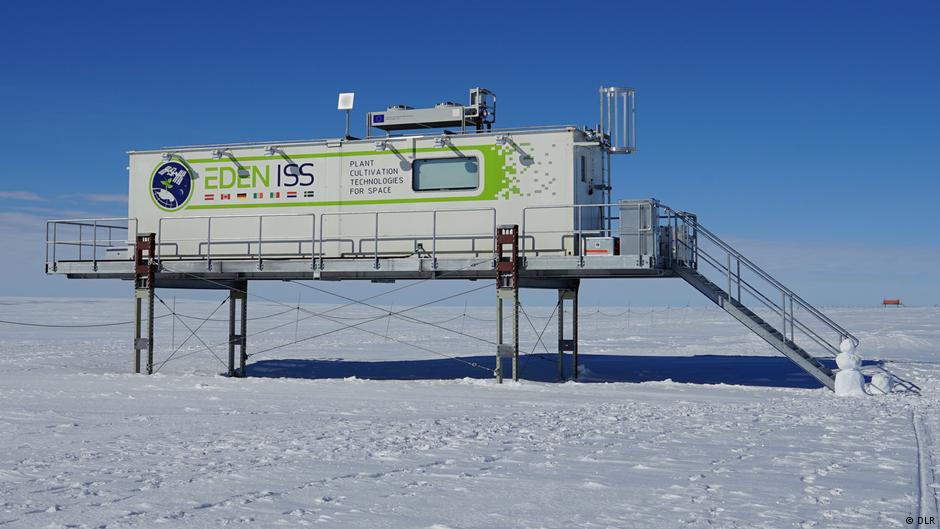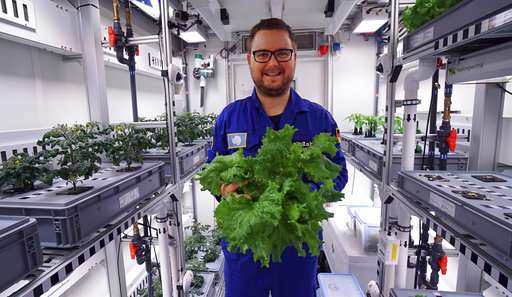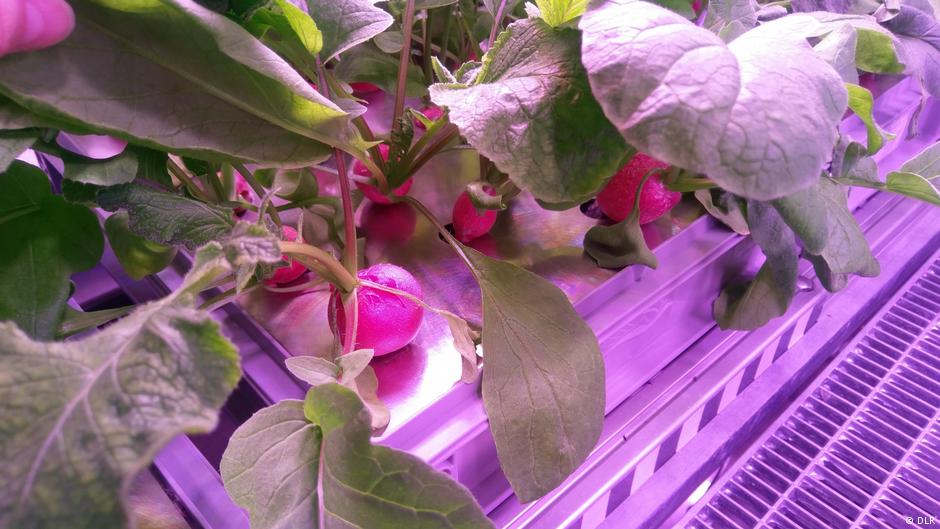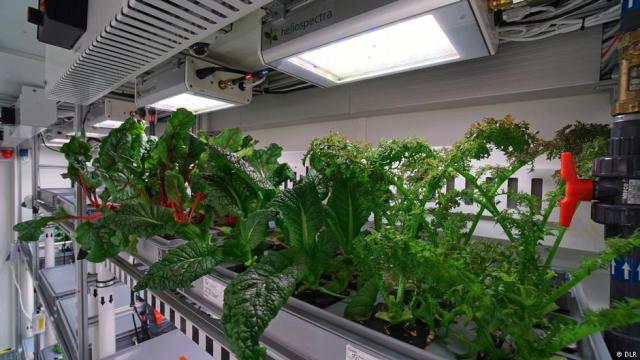As temperatures outside dipped to well below freezing, and as blizzards pounded the Antarctic research station, German scientists were carefully tending to a remarkable veggie garden – one requiring no soil or natural sunlight. The success of their first harvest, which produced vibrant-looking lettuce, radishes, cucumbers and other treats, represents a promising test run for similar greenhouses that could one day be built on Mars – or beyond.
Lettuce grown in the Antarctic greenhouse. Photo: DLR
It’s called the EDEN-ISS project, and it’s taking place at a greenhouse located 300m from Neumeyer-Station III, a research base sponsored by the Alfred Wegener Institute, the German Aerospace Center (DLR) and other institutions. By growing vegetables in one of the most uncompromising environments on Earth, the scientists are hoping to replicate conditions found on the Moon, Mars and other celestial bodies. Success here means future offworld colonists should be able to grow their own food, and not depend on complex and costly supply missions.

The experimental EDEN-ISS greenhouse in Antarctica. Photo: DLR
With no soil or natural sunlight, the German scientists grew their crops using a closed water cycle and optimised levels of carbon dioxide and artificial lighting. After just three weeks, Paul Zabel, an Antarctic gardener (how cool a title is that?), collected 3.6kg of lettuce, 18 cucumbers, and 70 radishes. And they looked amazing! Other crops included basil, parsley, chives and coriander. A stubborn batch of strawberries is taking its sweet time; the researchers are still waiting for the first successful harvest of the tasty fruit, telling German newsite Deutsche Welle they just have to be “patient”.
New day, fresh harvest. The first cucumbers #madeinantarctica from our #space greenhouse Eden-ISS! ???? ???? ???????? pic.twitter.com/ptLLDam1ra
— DLR – English (@DLR_en) March 30, 2018
Meanwhile, the temperatures outside reached -20C. Zabel usually spends between three and four hours a day tending to his garden, and he’s had to deal with some adversity, including minor system failures and a powerful storm – the strongest to hit the region in more than a year. Zabel is one of 10 researchers currently posted at the remote Antarctic station. They eventually hope to produce 4 to 5kg of fruits and vegetables per week, which could happen as early as this May.

Paul Zabel showing off his crop. Photo: DLR
This achievement is a first for German scientists, but it isn’t the first time that plants have been grown on the frozen continent. The McMurdo Station and Amundsen-Scott South Pole Station have hosted hydroponic greenhouse experiments before, with successful results. And NASA has even managed to grow some greens on the International Space Station. The difference here is that the German scientists are trying to produce a wider range of vegetables, and to set the groundwork for similar stations to be set up on the Moon or Mars. What’s more, the system could also be used on Earth in places where the climate is harsh or unpredictable.

Mmmm, radishes. Photo: DLR
